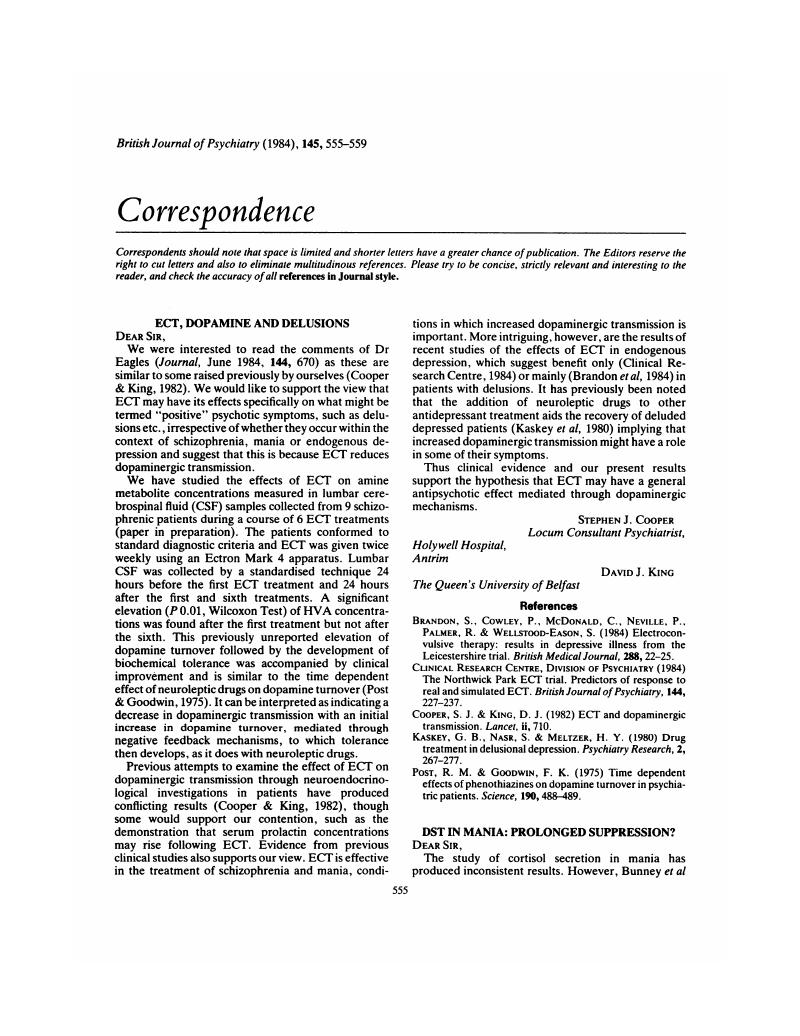Crossref Citations
This article has been cited by the following publications. This list is generated based on data provided by Crossref.
Cooper, S. J.
Leahey, W.
Green, D. F.
and
King, D. J.
1988.
The Effect of Electroconvulsive Therapy on CSF Amine Metabolites in Schizophrenic Patients.
British Journal of Psychiatry,
Vol. 152,
Issue. 1,
p.
59.
Lock, T.
and
McCulloch, J.
1991.
Local cerebral glucose utilization after chronic electroconvulsive shock: implications for the mode of action of electroconvulsive therapy.
Journal of Psychopharmacology,
Vol. 5,
Issue. 2,
p.
111.






eLetters
No eLetters have been published for this article.